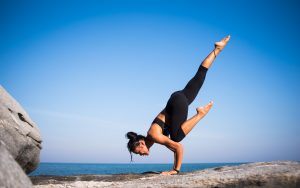Spanish Level 2- Face-to-Face Activities
💊 Spanish Level 2, Activity 13: La Salud / Health (Face to Face)

- Standard 1.1 Students engage in conversations, provide and obtain information, express feelings
and emotions, and exchange opinions. - Standard 1.2 Students understand and interpret spoken and written Spanish on a variety of topics.
- Standard 2.2 Students demonstrate an understanding of the relationship between the products and perspectives of Hispanic cultures.
- Standard 4.2 Students demonstrate an understanding of the concept of culture through comparisons between Hispanic cultures and their own.
Idaho Content Standards for World Languages:
- COMM 1.1 – Interact and negotiate meaning (spoken, signed, written conversation) to share
information, reactions, feelings, and opinions - COMM 2.1 – Understand, interpret, and analyze what is heard, read, or viewed on a variety of topics
- CLTR 1.1 – Analyze the cultural practices/patterns of behavior accepted as the societal norm in the target culture
- CONN 2.1 – Access authentic materials prepared in the target language by or for native speakers.
- COMP 2.3 – Compare and contrast authentic materials from the target culture with the learner’s culture.
NCSSFL-ACTFL Can-Do Statements:
- I can identify some typical products and practices related to familiar everyday life, such as the medicine people take.
- I can compare and contrast remedies for illness in the United States and Spanish-speaking countries.
Materials Needed
Would you like to make changes to the materials? Access the template(s) below:
Symptom Cards (Canva Template, free account required)
Need help with customizing the templates? View this video for help.
Warm Up
- Begin by opening the Google Slideshow introducing the Can-Dos for today’s activity.
Hola, ¿cómo están? Estoy ____. Vamos a empezar el lab de hoy con los can-do statements. - Students will then watch various commercials for different medicine products.
Para el calentamiento, vamos a ver algunos anuncios sobre productos médicos. - After each video, the students will be asked to identify the product in Spanish, as well as the symptoms discussed in the commercial.
Después de cada comercial, vamos a conversar sobre el tipo de medicina y los síntomas.
Main Activity
- For the main activity, you will introduce three “patients” and their symptoms.
Ahora, tenemos tres personas que están muy enfermas. Necesitan recomendaciones médicas. - The students are then shown various different medicines as well as the symptoms they are designed to alleviate, and they must choose which patient should take each medicine using context clues.
¿Cuáles medicinas ayudan a curar estos síntomas? - Students will then look at home remedies and again discuss which patient should use each remedy based on their symptoms.
Ahora, vamos a repasar algunos remedios caseros. - You will then review each patient again and ask the students to recall from memory which medicines and remedies are appropriate for each patient.
¡Una vez más vamos a revisar los síntomas de las tres personas! ¿Cuáles remedios caseros les recomiendas?
Wrap-up
- Ask the following questions to wrap-up the lab:
- ¿Has oído de estas medicinas antes? ¿Dónde? (Have you heard of these medicines before?)
- ¿Has oído de estos remedios caseros antes? ¿Dónde? (Have you heard of these house remedies before? Where?)
- ¿Somos buenos doctores o no? ¿Por qué? (Are we good doctors, or no? Why?)
End of Lab:
• Read Can-Do statements once more and have students evaluate their confidence.
(Use thumbs up/thumbs down or download our student cards)
• Encourage students to be honest in their self-evaluation.
• Pay attention, and try to use feedback for future labs!
NCSSFL-ACTFL Can-Do Statements:
- I can identify some typical products and practices related to familiar everyday life, such as the medicine people take.
- I can compare and contrast remedies for illness in the United States and Spanish-speaking countries.
Cultural NOtes:
How to Revise or Remix a Pathways Project Activity
Feeling creative? The Pathways Project needs your help in revising and remixing activities for the K-16 language classroom.
Try taking an activity to the next level by:
- Add new content (something you’ve created or another OER source)
- Contribute additional activity suggestions
- Integrate authentic materials such as videos, infographics, photos, etc.
- Suggest how to implement the activity in the classroom
- Customize the content for a specific audience or group of learners (for example, K-5 learners or to differentiate for student’s needs)

